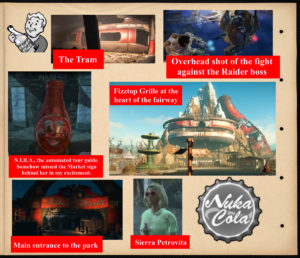“Life is always going to be stranger than fiction because fiction has to be convincing, and life doesn’t.” – Neil Gaiman
“Passenger Jet Lands in the Hudson.” That “Miracle on the Hudson” headline filled the front pages of many newspapers, not the pages of a novel.
I recently saw the movie “Sully,” which recreated U. S. Airways pilot, Captain Chesley Sullenberger III, landing his passenger jet on, not in, the Hudson River. A bird strike damaged both engines moments after takeoff forcing Captain Sully’s decision not to try to land at an airport. His daring maneuver saved the lives of all 155 people on that frigid January day.
If you had written a story about a jet’s safe water landing prior to this incident, few people would have believed it.
That movie brought back memories of a day in 1983. Fran, a close family friend, planned a trip to Taiwan and Japan with a tour group of six other women. She wanted to enjoy a vacation before leaving for a new job as an occupational therapist for crippled children in Atlanta, Georgia. My sister and I returned early from our vacation in Canada so that we could celebrate her upcoming adventure. Her friends gave her a going away party on Sunday, August 28. Fran was estranged from her mother, therefore my parents, sister, and I were her unofficial family. To this day I remember my sister and I embracing her at the party and singing “We are family, I got all my sisters with me,” the song by Sister Sledge.
Fran’s excitement and enthusiasm made everyone happy for her. She gave us her itinerary and gave my father the keys to her car. “Just in case,” she said. We made promises to visit her in Atlanta after she settled in. As we said good-bye, we wished her a safe and fun-filled trip.
On Thursday, September 1, 1983 news broke that a Korean plane carrying many Americans was attacked over Russian territory. My family sat in front of our parents’ television waiting for details of the attack.
KAL flight 007 was hit with Soviet rockets. I looked at Fran’s itinerary and froze. Slowly more information was released. Twelve minutes after the initial attack, radar contact was lost. When it was confirmed that the plane was lost over open water with 269 passengers and crew aboard, we cried.
The local news soon released the names of six of the American women in the tour group including their travel agent and a prominent judge. However, Fran’s name or information about her wasn’t released for several days. The TV anchor stated that the name of the last unidentified member of that tour group couldn’t be released because they weren’t able to find the name of her next of kin.
My mother called the company that booked the trip while I called the television station that focused on the story. To the gentleman answering the phone at the station, I identified myself, told him of my association with Fran, and simply said, “She was scheduled to take that plane. I can only hope she missed her flight. Please let my family know if she is the unnamed passenger you mentioned on the air.”
After a moment, the man said, “Please hold on while I get the station manager.”
I knew then that the news wasn’t good. I repeated the information to the station manager and he confirmed our worst fears.
“We’d like to know more about your friend,” he said. “Could we please interview your family?”
With my parents’ permission, a television reporter and camera crew arrived at their home the next day. During the televised interview, a postcard arrived at my parents’ home from our “sister” Fran stating that the trip was great so far and she was excited. Knowing that this joyous postcard would be the last communication from her was heartbreaking.
The camera crew focused on the postcard then asked for a picture of our late friend. We selected the picture of Fran smiling next to my sister’s youngest son. During the interview, my father was too overwhelmed to speak. My mother and sister talked about Fran’s loving and faithful spirit and I spoke about her looking forward to a new job and a new home. “I just didn’t know that her new home was going to be in heaven,” I said. Tears flowed freely, but I refused to wipe mine away.
The reporter later told us that when the interview was seen by staff members at the station, there wasn’t a dry eye in the place.
Fran was prominent and well respected in her church. A large memorial service was performed with my family there to mourn her. Her mother didn’t attend, but more than a hundred people who knew her were there. The television camera crew covered the services, but my father didn’t allow more interviews with us. He felt it was too much to endure.
After seeing “Sully,” the following words haunted me. “On Thursday, September 1st, 1983, Soviet jet fighters shoot down Korean Airlines flight 007 in Russian airspace killing all 269 passengers and crew members.”
In the movies, planes are often shot down. But this was real life and happened to a person I cared about, not a fictional character. This was hard to swallow, to understand, to accept as reality. This was not a story I would have written. And yet life wrote that story for me.
Do you have a real life, almost unbelievable, story you’d like to reveal? Could you make it believable and not contrived? Even if you chose to write a fictional account rather than a memoir, would you be able to convince your audience that this could have happened?
I found it unbelievably difficult to write this shortened version of the horrible incident without tears filling my eyes. But I did write Fran’s story and tears be damned.
Tags: Sully, Chesley Sullenberger; September 1, 1983; Korean Airlines Flight 007, Soviet Jet Fighters


